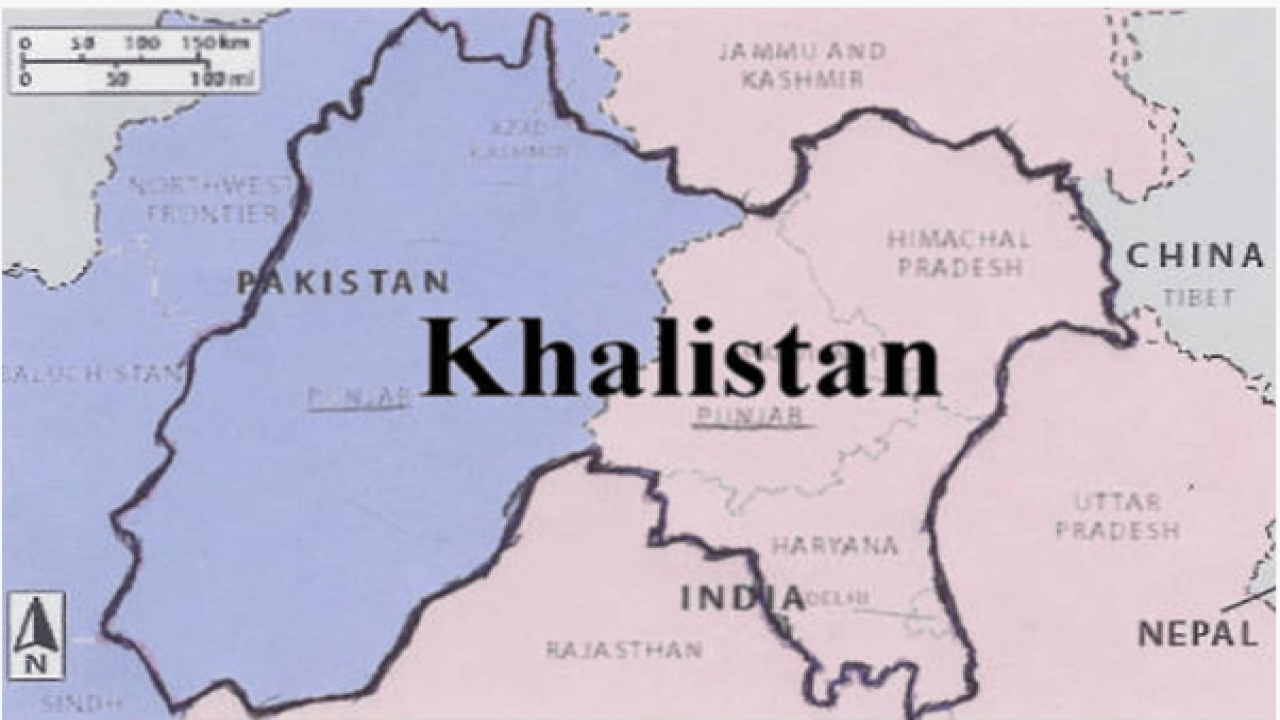
The Khalistan area map is a significant topic in the discourse surrounding the quest for an independent Sikh state in India. As discussions about Khalistan gain momentum, understanding its geographical context becomes essential. This article delves deep into the Khalistan area map, providing insights into its historical background, current dynamics, and the implications of this movement on regional stability.
The quest for Khalistan, which translates to "Land of the Khalsas," represents a complex intersection of religious identity, political aspirations, and regional autonomy. The geographical delineation of this region has been a subject of interest for scholars, policymakers, and community activists alike. In this comprehensive article, we aim to provide a clear representation of the Khalistan area map and analyze its significance in contemporary discussions about statehood and identity.
In the following sections, we will explore the historical roots of the Khalistan movement, examine the current socio-political landscape, and present an authoritative map detailing the proposed region. By the end, readers will gain a well-rounded understanding of the Khalistan area map and its relevance in today's world.
Table of Contents
1. Historical Background of Khalistan
The Khalistan movement has its roots in the early 20th century, stemming from a combination of socio-political grievances faced by the Sikh community in India. After the partition of India in 1947, Sikhs found themselves in a precarious situation, leading to increased calls for a separate state.
Key events that intensified the Khalistan movement include:
- The Anandpur Sahib Resolution of 1973, which demanded greater autonomy for Punjab.
- The Operation Blue Star in 1984, which involved the Indian Army storming the Golden Temple, a sacred site for Sikhs, to remove armed militants.
- The assassination of Prime Minister Indira Gandhi later that year, which led to widespread anti-Sikh riots.
2. Geographical Significance of Khalistan
The proposed Khalistan region primarily encompasses parts of Punjab, Haryana, and Himachal Pradesh in India. Understanding the geographical significance involves looking at:
- The historical boundaries of Punjab prior to the partition.
- The demographic makeup of the region, which has a significant Sikh population.
- The economic resources and agricultural output of Punjab, which play a crucial role in the movement's viability.
2.1 Historical Boundaries
The historical boundaries of Punjab have shifted significantly over the years, particularly due to the partition and subsequent political changes. The Khalistan movement seeks to reclaim these historical territories for Sikhs.
2.2 Demographic Makeup
The demographic makeup of the Khalistan region is predominantly Sikh, which is a vital factor in the push for a separate state. The region has a rich cultural heritage and a strong sense of identity among its residents.
3. Current Status of Khalistan Movement
As of 2023, the Khalistan movement has seen a resurgence, particularly among the Sikh diaspora in countries like Canada, the UK, and the USA. Various activist groups have emerged, advocating for the cause through peaceful protests and online campaigns.
Despite these efforts, the Indian government continues to view the movement as a threat to national integrity. This has led to crackdowns on pro-Khalistan activities within India, further complicating the situation.
4. Khalistan Area Map Overview
The Khalistan area map provides a visual representation of the proposed region. Key features of the map include:
- The delineation of Punjab's borders vis-à-vis proposed Khalistan.
- Major cities and towns within the proposed boundaries.
- Geographical landmarks significant to the Sikh community.
Below is a simplified version of the Khalistan area map:
[Insert Khalistan Area Map Image Here]
5. Demographics of the Khalistan Region
The demographics of the Khalistan region are crucial for understanding the potential viability of an independent state. Key demographic factors include:
- Sikh Population: Over 57% of Punjab's population identifies as Sikh.
- Religious Diversity: The region is home to various religious communities, including Hindus and Muslims.
- Economic Factors: Agriculture plays a central role in the region's economy, with a focus on wheat and rice production.
6. International Perspective on Khalistan
The Khalistan movement has gained varying levels of support from international communities, particularly among the Sikh diaspora. The movement is viewed differently across countries, with some supporting the call for self-determination while others prioritize maintaining India's territorial integrity.
Key international perspectives include:
- Support from certain political groups in Canada and the UK.
- Concerns from the Indian government regarding separatist activities abroad.
- The role of international human rights organizations in advocating for peaceful resolutions.
7. Implications of Khalistan's Independence
The potential for Khalistan's independence raises several implications, both regionally and internationally. Some of these implications include:
- Geopolitical Stability: The establishment of Khalistan could alter the balance of power in South Asia.
- Economic Impact: The economic ramifications for both India and Khalistan would need to be carefully considered.
- Cultural Preservation: A separate Khalistan could provide a platform for the preservation of Sikh culture and identity.
8. Conclusion
In summary, the Khalistan area map represents more than just geographical boundaries; it embodies a historical struggle for identity, autonomy, and self-determination. Understanding the dynamics surrounding Khalistan is crucial for engaging in informed discussions about its future.
We invite readers to share their thoughts on the Khalistan movement and its implications in the comments section below. Your insights are valuable in fostering dialogue around this important issue.
For further reading, feel free to explore other articles on our site that delve into similar topics related to regional autonomy and identity movements.
Thank you for visiting, and we hope to see you return for more insightful discussions!
ncG1vNJzZmivp6x7o77EnKKepJxjwqx7zaiurKyimq6uhI6kn5qkmajBorqMmqmemV2irrF6x62kpQ%3D%3D